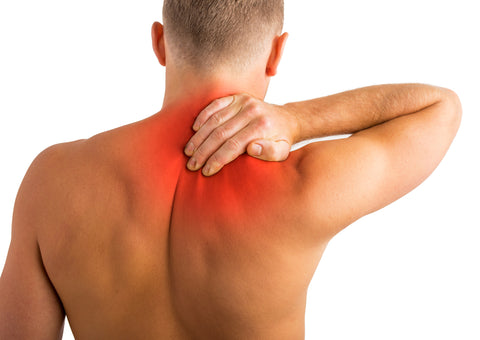
Short and sweet
While most people know it as the ‘upper back,’ the 12 vertebrae that make up this region are called the “vertebrae thoracicae.” That space between the base of the neck and the lower edge of the ribs is what mainly maintains our back stability.
It is also a less flexible part of the lower back, so it is less affected by the heavy load of our body weight. Therefore, an upper back disc rupture is uncommon.
What causes back pain?
Upper back pain is less common than other types of back pain. It can happen for two main reasons: muscle problems and bone problems. Muscle problems include poor posture, degeneration of the muscle tissue (that may also result from prolonged sitting and sedentarism), and muscle spasms resulting from exertion.
Bone pain can be caused by a wide range of factors, including bumps, accidents, falls, and bone degeneration as a result of the normal aging process.
What’s more, lately, many researchers believe that some types of back pain can be attributed to mental health factors like stress, anxiety, and depression.
What does back pain feel like?
Upper back pain can be sharp or dull, sometimes accompanied by a feeling of discomfort in other areas of the body, such as the chest.
How common is upper back pain?
Upper back pain less than low back pain, but it is estimated that around 15 percent of the population, with women at higher risk than men, suffer from upper back pain.
How is upper back pain diagnosed?
If the pain persists for some time without any relief, seek medical attention. Your physician will perform a physical examination, which may include cracking your back in some areas, range of motion tests, and questions about your medical history and lifestyle. In some cases, they may also send you for imaging tests. Most of the time, upper back pain does not indicate life-threatening problems.
How is upper back pain treated? Can advanced technology help?
As with any orthopedic problem, rest is the name of the game. But resting doesn’t mean lying in bed all day; it’s a little rest, along with continuing with your daily routine and maintaining careful mobility what will help you ease your back pain.
While you are resting, it is essential to avoid situations that cause pain. If tight muscles are causing you pain, it is recommended to use warm compresses, self-massaging (with the help of a tennis ball and leaning against a wall), or getting a professional massage. Painkillers can also help when the pain is intense.
Upper back pain can also be alleviated with the help of at-home pain relief devices, which use advanced pain-relieving technologies. The most effective at-home pain-relieving device is “Olynvolt™ Pocket” a compact and easy to use pain management device.
How to avoid upper back pain in the future?
If you sit in front of your computer for many hours, we recommend changing your workspace (adjusting the screen height and chair position, buying ergonomic accessories, etc.) as well as making sure you take several breaks to get up and stretch your back. Regular exercise will also help strengthen your muscles and improve posture.







